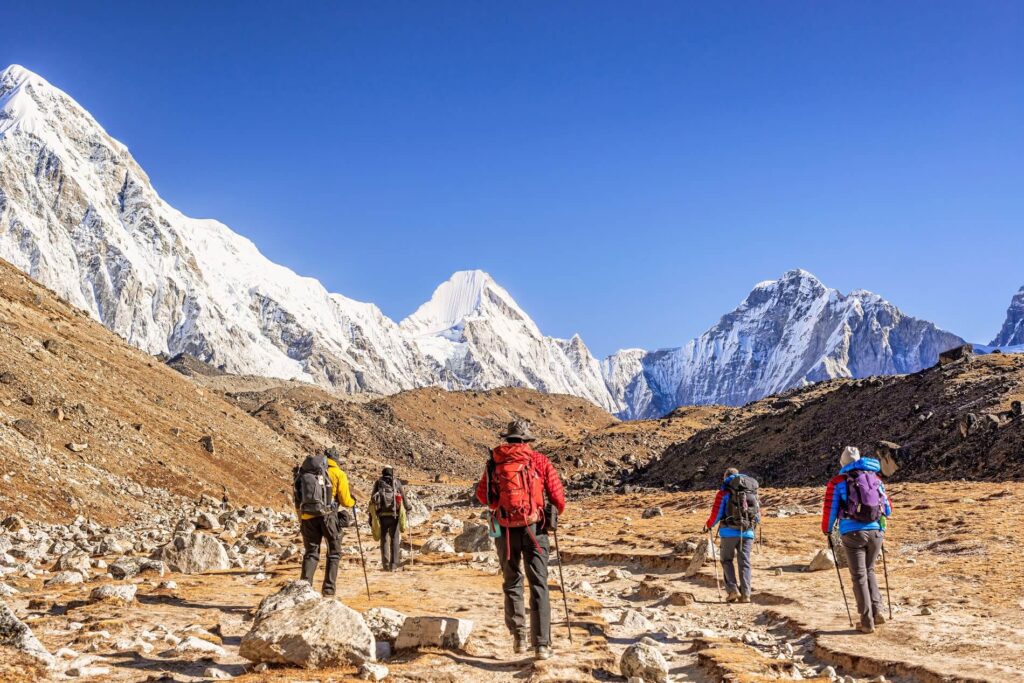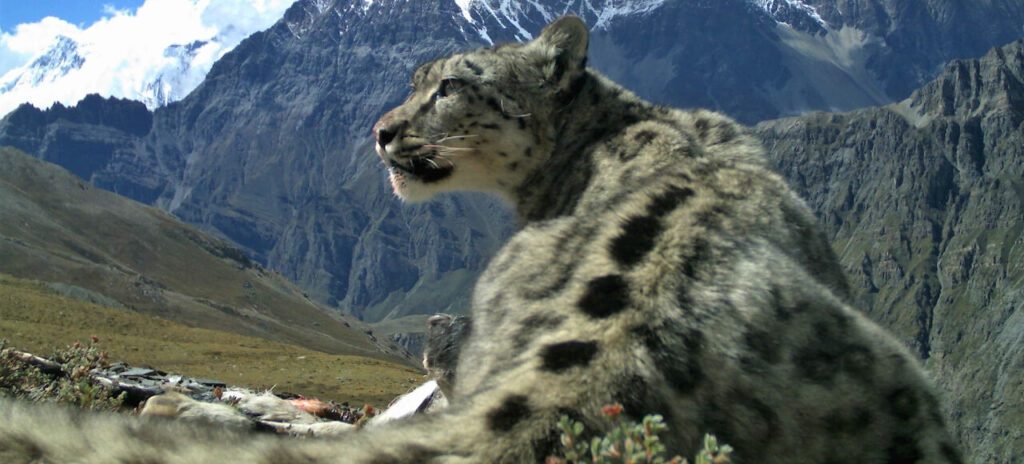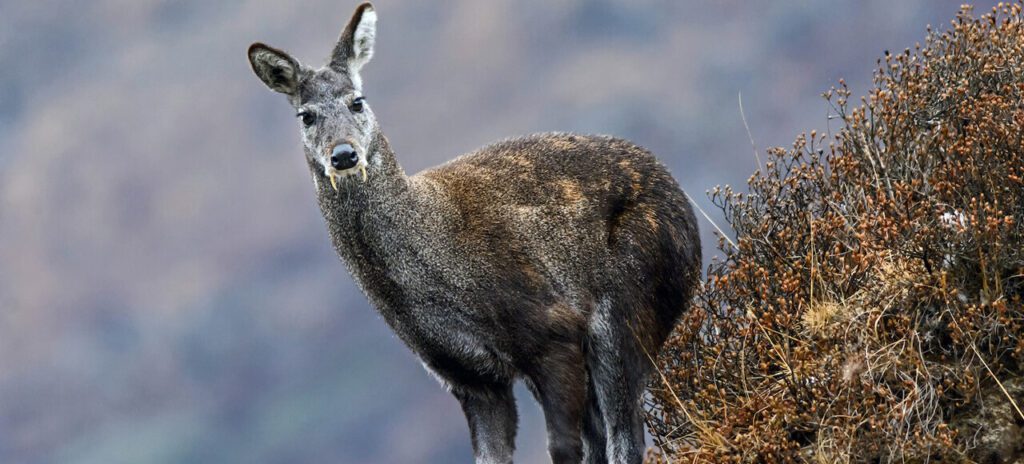The Everest Base Camp trek in July is during the monsoon season in Nepal, which runs from June to August. During this time, the weather can be quite unpredictable, with frequent rain showers and cloud cover. However, the trail is typically less crowded than during the peak season, and the lush green landscapes can be breathtaking. Despite the challenging weather conditions, many trekkers still choose to tackle the Everest Base Camp trek in July for the unique experience it offers.
Weather at Everest Base Camp in July
Everest Base Camp is a popular destination for adventurers and trekkers from around the world. Located in the Khumbu region of Nepal, the base camp is situated at an altitude of 5,364 meters (17,598 feet) above sea level. While the trek to Everest Base Camp is breathtakingly beautiful, the weather conditions can be unpredictable, especially during the monsoon season which runs from June to September. July falls in the middle of the monsoon season, and it is one of the wettest months of the year at Everest Base Camp.
More: Everest Base Camp in June – Temperature, Weather, Clothing, & Travel Tips
During this time, the region receives an average of 350mm of rainfall, which is nearly three times the amount of rain that falls in the Everest region during the dry season (October to May). The temperature in Everest Base Camp during July ranges from a minimum of 2°C (36°F) to a maximum of 12°C (54°F). The nights are chilly, and trekkers need to be prepared for the cold weather. It is essential to carry warm clothing, including a good quality sleeping bag and a down jacket.
Average Temperature of Everest Base Camp in July
The temperature at Everest Base Camp can vary depending on the season, but in July, the average temperature is typically between 5 and 15 degrees Celsius. The Everest Base Camp is located at an altitude of 5,364 meters above sea level, which means that the climate is significantly different from what most people are accustomed to. In July, the temperature at Everest Base Camp is relatively mild during the day, with average highs around 10 degrees Celsius. However, temperatures can drop significantly at night, with average lows around -5 degrees Celsius.

Despite the relatively mild daytime temperatures, the weather at Everest Base Camp can be unpredictable and can change rapidly. Trekkers need to be prepared for sudden changes in temperature, high winds, and heavy rainfall. It’s not uncommon for temperatures to drop well below freezing. The monsoon season in Nepal runs from June to September, and during this time, there is a high chance of rainfall, which can cause landslides and flooding in the region.
Also Read: Everest Base Camp Route – From Tenzing Hillary route to Heli ride
The crowd at Everest Base Camp in July
Everest Base Camp Trek is one of the most popular treks in the world, attracting thousands of adventurers each year. However, the peak trekking season, which is in the months of October and November, sees a huge crowd of trekkers. But even in the off-season, particularly in July, the trek still attracts a sizable number of hikers. Since it is one of the monsoon months in Nepal, it may not be the best time to trek but it is still possible to complete the Everest Base Camp Trek during this period.

One of the reasons why July is considered an off-season for the Everest Base Camp Trek is due to the unpredictable weather conditions that hikers may encounter. Despite that, many trekkers still choose to embark on the Everest Base Camp Trek in July. One of the main reasons for this is that the trek is much quieter compared to peak season months. The crowd is much smaller, which means that trekkers have more space and freedom to explore the trails without feeling overwhelmed by the number of people.
Festival
- Naga Panchami Festival: The Naga Panchami Festival is celebrated throughout Nepal in July and is dedicated to the Nagas or serpent deities. The festival is a time for people to pay homage to these powerful beings and is especially important for those who work in the fields or near water sources. In the Everest Base Camp region, the festival is celebrated by offering prayers and offerings to the Nagas at various temples and shrines throughout the region.
- Saune Sankranti: Saune Sankranti is a traditional Hindu festival that is celebrated in Nepal during the month of Saun, which falls in July or August according to the Nepali calendar. It is a festival that celebrates the start of the monsoon season. During this festival, people take ritual baths in rivers, lakes, and other water bodies to purify their bodies and soul. It is believed that taking a bath during this auspicious day will wash away all sins and misfortunes of the past and bring good luck and prosperity in the future.
Flora and Fauna found at Everest Base Camp in July
Flora
Nestled in the heart of the Himalayas, the Everest Base Camp is a place of wonder and beauty. The stunning scenery, towering mountains, and the incredible flora and fauna that call it home make it a paradise for nature lovers. If you happen to be visiting the Everest Base Camp in July, you’ll be treated to an array of breathtaking flora that’s unique to this time of year.
July is a fantastic time to visit the Everest Base Camp as it marks the peak of the monsoon season in Nepal. The abundant rainfall provides a nourishing environment for the flora to thrive, making it an excellent time to see some of the region’s rarest plant species in bloom.
Here are some of the most beautiful flora species that you can expect to see during your visit to the Everest Base Camp in July:
- Himalayan Blue Poppy: Himalayan Blue poppy is known as one of the rarest and most beautiful flowers in the world, the Himalayan Blue Poppy is a sight to behold. It is one of the most striking flora species found in the region during July. This flower is known for its delicate, sky-blue petals, which seem to glow against the green foliage of the mountains. The Himalayan Blue Poppy is a rare and beautiful plant species that are endemic to the region, and it’s a favorite among hikers and nature enthusiasts alike.
- Primula: The Primula family has over 500 varieties, making it one of the most diverse plant families in the world. The Primula’s vibrant colors and sweet fragrance make it a popular sight among visitors.
- Rhododendron: Another type of plant that is frequently seen in the area in July is the rhododendron. Rhododendrons, which can be found in over 30 distinct species in the Himalayas, are a typical sight on the route to the Everest Base Camp. Bright pink to deep red are only a few of the colors that the rhododendron flowers bloom in during the month of July.
- Himalayan Edelweiss: In July, visitors to the Himalayas can witness the rare and endangered Himalayan Edelweiss, a plant species that are endangered and that’s indigenous to the region. Its delicate white petals and woolly texture make it a stunning sight. As a treasured species, it’s imperative to protect the Himalayan Edelweiss from the harmful effects of global climate change and human activities.
Fauna
Everest Base Camp, which is 5,364 meters above sea level, is a well-known trekking location worldwide. In addition to having beautiful scenery and difficult topography, the area is home to a wide variety of flora. Here are some animals that you can spot during your trek to Everest Base Camp:
Snow Leopard
The snow leopard, one of the world’s most anonymous and endangered big cats, is a native of the high-altitude Himalayas, including Everest Base Camp. These majestic creatures are distinguished by their stunningly attractive fur and their ability to blend into their surroundings, which makes it difficult to tell them apart them.

It’s a great opportunity to see snow leopards in July because they migrate to lower regions in search of prey. It’s important to remember that they are still fairly rare and difficult to detect, so hiring an expert guide is crucial.
Himalayan Tahr
The Himalayan Tahr, a species of mountain goat, is another creature that can frequently be found in Everest Base Camp. These animals, which are recognizable by their unique horns and shaggy coats, are frequently spotted grazing on mountain slopes. The Himalayan Tahr is an excellent example of how adaptable nature is because it has adapted to the challenging environment and high elevation of the Himalayas.
Musk Deer
Musk deer normally reside in mountainous shrublands and forests at high altitudes, between 3,000 and 5,000 meters above sea level.

They are primarily herbivores, consuming various kinds of vegetation, leaves, and fruits.
Also Check: Food and Accommodation on Everest Base Camp Trek
Other Trek in July
The Everest Base Camp trek is an adventure of a lifetime that offers a glimpse into the spectacular Himalayas and the unique Sherpa culture of Nepal. While the journey to Everest Base Camp is itself a rewarding experience, there are several side treks that you can take to enhance your experience during the month of July. Some favorable side treks are listed below;
- Kala Patthar Trek: Kala Patthar is a famous viewpoint in the Khumbu region, which offers a breathtaking panoramic view of Mount Everest and its surrounding peaks. The trek to Kala Patthar is a strenuous climb that takes around 2-3 hours from Gorak Shep, the last settlement before Everest Base Camp. However, the view from the top is worth every step. During the month of July, the skies are usually clear, providing a stunning view of the snow-capped peaks.
- Gokyo Valley Trek: The Gokyo Valley trek is a captivating option to the conventional Everest Base Camp route. The trek winds through the picturesque Gokyo Valley, which boasts numerous turquoise lakes and magnificent views of the Himalayas. July presents the perfect opportunity for hiking, as the weather is usually warm and sunny. Additionally, since the trek to Gokyo Valley is less crowded than the Everest Base Camp trek, you can relish the peacefulness of the Himalayas.
- Thame Valley Trek: The Thame Valley trek is a less-explored side trek that takes you through the stunning Thame Valley. The trek offers a unique opportunity to experience the traditional Sherpa culture of Nepal and visit the ancient Thame Monastery, which dates back to the 17th century. The trek to Thame Valley is a moderate climb that takes around 3-4 hours from Namche Bazaar, making it a perfect day trip during your Everest Base Camp trek. July is an excellent time to visit the Thame Valley as the weather is usually warm and sunny, providing an ideal environment for trekking.
Tips for Everest Base Camp in July
Here are some tips for trekking to Everest Base Camp in July:
- Be prepared for monsoon weather: July is the beginning of the monsoon season in Nepal, so be prepared for rain, mud, and slippery trails. Bring waterproof gear, including a rain jacket and pants, and make sure your hiking boots have good traction.
- Due to the high traffic during July, commencing your trek early will enable you to evade the crowds on the trail and complete your daily trek before the rainfall sets in. This month is known to be one of the most bustling times for trekking to Everest Base Camp.
- Pack appropriately: Make sure you pack appropriate clothing for the changing weather conditions, including lightweight layers that can be easily removed or added as needed. Bring insect repellent, as mosquitoes can be a nuisance during the monsoon season.
- Hire a guide: During your trek, hiring a local guide can be a wonderful way to make sure you remain safe and on track. A guide can also suggest the best routes and accommodations along the way and offer useful information about the local way of life and surroundings.
Merits and Demerits
Merits
Here are some of the reasons why you should consider trekking to Everest Base Camp in July:
- Less Crowded Trails: July is considered as the off-season for trekking in the Everest region, which means you will have the trails to yourself with very few trekkers on the route. This makes for a more peaceful and tranquil experience with plenty of opportunities to immerse yourself in the natural beauty of the region.
- Lush Greenery and Wildflowers: July is the monsoon season in Nepal, and the Everest region receives a good amount of rainfall during this time. This results in lush greenery, blooming wildflowers, and cascading waterfalls all along the trekking route. The scenery is simply breathtaking and makes for some amazing photo opportunities.
- Clearer Views of the Mountains: July also offers spectacular views of the towering peaks. The monsoon rains have the ability to cleanse the air of pollutants and dust, resulting in clearer visibility of the mountains. The lush greenery, which contrasts beautifully with the peaks, adds to the awe-inspiring visual experience.
- Lower Trekking Costs: As July is considered an off-season for trekking in the Everest region, the trekking costs tend to be lower than during peak season. This includes everything from accommodation to food and transportation, making it a more affordable option for those on a budget.
- Cultural Festivals: July is a month of cultural festivals in Nepal. This is a great opportunity to witness local culture and traditions and immerse yourself in the festive atmosphere.
Demerits
Even though the Everest Base Camp trek is a thrilling and rewarding experience, trekking in July can come with some significant demerits. Let’s discuss about the demerits of trekking to Everest Base Camp in July.
- Monsoon Season: Nepal experiences its rainy season in July. It rains a lot during this season, which increases the risk of landslides and floods. It can be challenging to stroll on the trails when they are slippery as well as unsafe. Furthermore, the weather can be unstable, with frequent rain, clouds, and mist obstructing the stunning views of the Himalayas. River crossings can become dangerous as well as the trekking paths become muddy.
- Health Risks: A trek to Everest Base Camp can be exhausting and challenging for a trekker’s health. It is difficult to adjust to high humidity levels during July, which makes trekking particularly challenging. It is more likely that trekkers will experience altitude sickness during this time, so extra precautions must be taken. Additionally, waterborne diseases such as diarrhea, typhoid, and cholera are more prevalent during the monsoon season.
Let our expert team at Asian Heritage Treks and Travel take care of everything — from guided tours to personalized packing tips and travel arrangements.
Plan My Everest Trip







